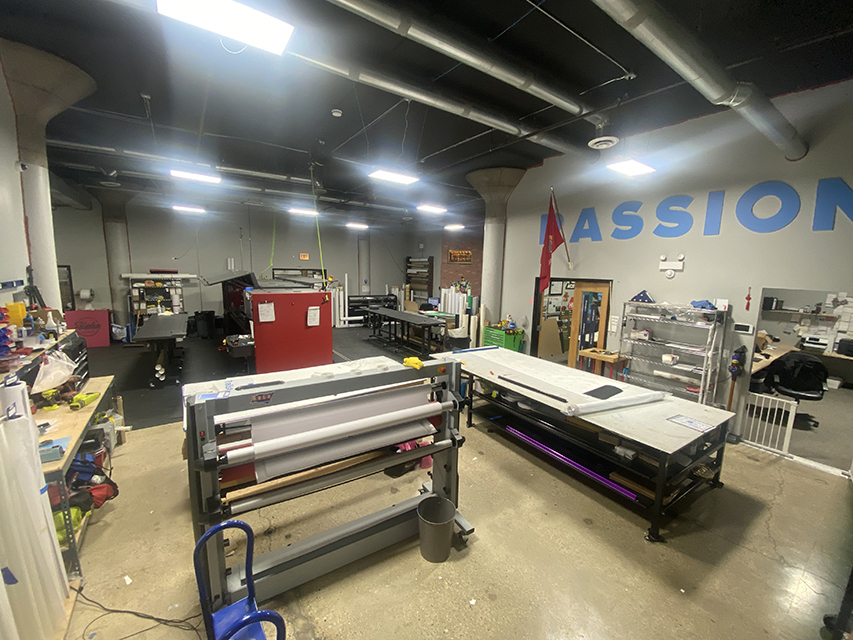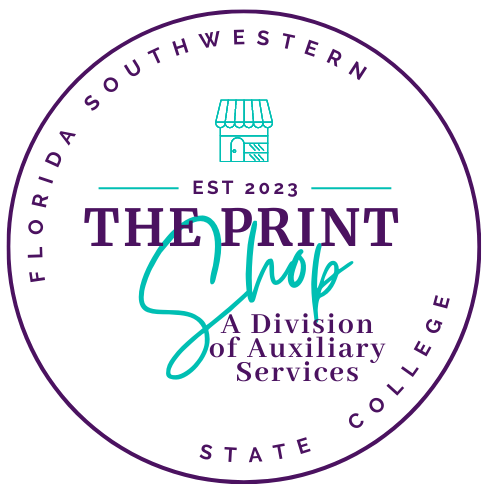How a Print Shop Near Me Helps You Choose the Right Finish
How a Print Shop Near Me Helps You Choose the Right Finish
Blog Article
The Ultimate Guide to Utilizing Printing Providers for Customized Art Prints
Guiding via the world of customized art prints requires a clear understanding of different printing solutions. Artists must take into consideration aspects such as printing strategies and products to achieve the wanted end result. Each decision, from artwork prep work to shade calibration, plays an important function in the end product. As they check out these elements, musicians can disclose the potential for their work to get in touch with target markets in a significant way. What actions can they take to assure their prints stand apart?
Understanding Various Kinds Of Printing Providers
Many people may neglect the details of printing solutions, recognizing the various types available is vital for anyone looking to develop custom-made art prints. One of the most common types consist of electronic printing, balance out printing, and screen printing. Digital printing is preferred for its quick turnaround and capacity to generate high-grade pictures directly from electronic data, making it suitable for small runs. In contrast, offset printing offers superior photo top quality and is cost-efficient for larger quantities, utilizing plates to move ink onto paper. Display printing, commonly made use of for fabrics and advertising products, involves pressing ink through a mesh screen, permitting dynamic shades and appearances. Each method has its distinct benefits and constraints, making it important for musicians and designers to analyze their specific demands, such as quantity, preferred high quality, and budget, before choosing a printing solution that straightens with their imaginative vision.
Choosing the Right Products for Your Prints
Selecting the suitable materials is necessary for attaining premium custom art prints. Understanding the numerous types of paper and the significance of ink high quality can significantly influence the outcome. Musicians have to take into consideration these factors to assure their vision is accurately stood for in the published item.
Paper Types Explained
Selecting the appropriate paper type is essential for achieving the preferred aesthetic and durability in custom art prints. Different alternatives exist, each offering unique features. Glossy paper enhances color vibrancy and information, making it excellent for digital photography prints. On the other hand, matte paper offers a softer surface, which is preferable for art work that calls for subtlety and appearance. Fine art paper, frequently made from cotton or alpha cellulose, uses archival top quality and appropriates for duplicating elaborate details in paints (Print Shop Near Me). Furthermore, specialized papers, such as watercolor or canvas, can include distinct aesthetic impacts. Ultimately, selecting the ideal paper kind will greatly influence the last presentation, making sure that the art work is both resilient and visually enticing
Ink Quality Issues
Ink top quality plays a crucial duty in the total success of custom art prints. High-quality inks guarantee dynamic shades, sharp information, and longevity, which are vital for showcasing imaginative work. When choosing printing services, artists should consider pigment-based inks over dye-based alternatives, as they provide much better fade resistance and shade security. In addition, the option of ink ought to enhance the selected paper type, improving the print's visual influence. Environmental elements, such as moisture and temperature level, can additionally affect ink efficiency; as a result, musicians need to make inquiries concerning ink formulations that resist these elements. Eventually, purchasing premium ink top quality can raise the last product, guaranteeing that the art print holds to the musician's vision for years to find.
Exploring Printing Techniques: Digital vs. Traditional
While both typical and digital printing strategies have their special advantages, the decision on which approach to use commonly pivots on the details requirements of the art work. Digital printing stands out in versatility and rate, enabling fast turnaround times and the ability to print as needed. This method is particularly valuable for musicians that need small runs or distinct items, as it gets rid of the demand for substantial arrangement processes.Conversely, typical printing techniques, such as lithography and display printing, usually produce richer appearances and shades, appealing to musicians seeking a much more tactile and authentic coating. These techniques can enhance the deepness and quality of the artwork, making them ideal for larger editions. Furthermore, conventional methods may supply a distinctive visual that electronic printing often battles to duplicate. Inevitably, the selection in between these techniques need to consider elements like preferred top quality, amount, and creative intent, guiding musicians to one of the most suitable option for their tasks.

Preparing Your Artwork for Printing
Successfully preparing artwork for printing calls for cautious focus to information, despite the picked printing method. Artists have to guarantee that their files are produced at the proper resolution, usually 300 DPI, to preserve sharpness and quality. The proper color mode, generally CMYK for print, is vital to accomplish the desired shade accuracy. Musicians need to additionally think about the measurements of the artwork, making certain to include bleed areas if needed, to avoid any unwanted white sides after trimming.Additionally, data formats play an essential role; TIFF and PDF are frequently liked for high-grade prints. Prior to entry, it is necessary to assess the artwork for any type of flaws or unwanted elements. By carefully checking these facets, artists can improve the chance of their prints lining up with their creative vision, ultimately resulting in an effective printing end result.
The Significance of Shade Calibration and Proofing
Color calibration and proofing are important action in the printing process, as they assure that the final output properly reflects the artist's vision. Appropriate color calibration guarantees that the colors displayed on the display match those that will certainly be printed. This procedure includes adjusting the screen setups, printer accounts, and inks to attain a constant shade representation.Additionally, proofing enables artists to preview their job prior to the last print run. This stage enables them to spot and remedy any kind of discrepancies in shade, saturation, or detail, thereby decreasing costly errors. By utilizing hard-copy or digital evidence, musicians can make enlightened choices concerning changes required for suitable results.Incorporating color calibration and proofing into the printing process not only improves the top quality of the end product yet likewise fosters a reliable collaboration between the musician and the printing service, ensuring contentment and integrity to the initial art work.
Picking the Perfect Dimension and Layout for Your Prints

Marketing and Marketing Your Personalized Art Prints
Advertising and marketing and offering customized art prints needs a solid brand identification to stick out in an open market. Effective online promotion methods and the strategic usage of social media sites systems can substantially improve presence and engagement. By integrating these components, artists can produce an engaging existence that draws in prospective buyers.
Structure Your Brand Name Identity
Developing a strong brand name identification is crucial for artists looking to efficiently market and sell their custom art prints. This identification incorporates the musician's distinct style, worths, and tale, which resonate with prospective purchasers. Artists ought to develop a cohesive visual existence throughout all platforms, including logo designs, color pattern, and typography that mirror their imaginative vision. In addition, a clear mission statement aids connect the artist's objective and passion. Involving storytelling about the ideas behind each piece can foster emotional connections with the audience. Consistency in messaging, whether on social media or packaging, enhances acknowledgment and trust. By meticulously curating their brand name identification, musicians can differentiate themselves in an affordable market, bring in faithful customers who value their virtuosity.
Effective Online Promotion Techniques
What strategies can musicians employ to properly advertise their customized art publishes online? First, establishing an expert internet site showcasing the artwork is vital. This site needs to consist of high-quality photos and comprehensive descriptions to engage potential buyers. Additionally, musicians can make use of e-mail marketing by constructing a subscriber list to share updates, promos, and new launches. Working together with blog owners and influencers in the art neighborhood can broaden reach and reliability. Offering special items or limited-time price cuts can likewise produce necessity, encouraging acquisitions. Moreover, enhancing web content for search engines with pertinent search phrases will certainly improve exposure. Preserving a blog regarding the imaginative procedure can draw in art fanatics, fostering a deeper connection with the audience and boosting the total marketing technique.
Utilizing Social Media Platforms
Social media site platforms function as powerful devices for musicians aiming to market and market their personalized art prints. By leveraging platforms why not check here like Instagram, Facebook, and Pinterest, artists can showcase their job to a vast audience. Involving visuals and calculated hashtags can raise exposure, attracting potential customers to their accounts. Routinely posting content, such as brand-new designs or behind the curtain procedures, helps preserve target market rate of interest and fosters a sense of neighborhood. Additionally, musicians can make use of targeted marketing to reach specific demographics, enhancing the possibilities of sales. Cooperations with influencers or various other artists can even more enhance exposure. Ultimately, a well-curated social media sites existence not only advertises customized art prints however likewise constructs a faithful client base with time.
Regularly Asked Questions

How Do I Find Reputable Printing Service Providers?
To find trusted printing provider, one ought to look into on-line testimonials, seek recommendations from peers, compare portfolios, request samples, and assess client service responsiveness. This detailed approach guarantees notified decisions and sufficient outcomes.
What Is the Normal Turn-around Time for Custom Prints?
The typical turnaround time for custom prints varies by company, yet generally varies from a couple of days to 2 weeks. Aspects affecting this consist of order dimension, intricacy, and the details printing techniques made use of.
Can I Get a Reimbursement if I'm Not Pleased With My Prints?
The question of acquiring a reimbursement for poor prints often depends on the specific printing service's policies. Several firms offer complete satisfaction guarantees, while others might have rigorous return conditions, stressing the importance of evaluating terms ahead of time.
Are There Any Kind Of Hidden Prices Connected With Printing Services?
Many printing services may include covert prices such as configuration costs, shipping costs, or added fees for details products. It's crucial for clients to make inquiries concerning all possible expenditures prior to finalizing their order.
How Can I Ensure My Prints Are Eco Friendly?
To ensure prints are environmentally friendly, one should select green inks, recycled paper, and lasting printing methods. Looking into printing solutions that focus on sustainability and obtaining qualifications can better guarantee minimal ecological effect in the printing process. Guiding through the globe of personalized art prints needs a clear understanding of various printing services. Many people might forget the ins and outs of printing services, understanding the different kinds offered is important for any person looking to produce custom art prints. The most typical types include digital printing, counter printing, and display printing. Successfully preparing artwork for printing calls for careful interest to detail, regardless of the chosen printing method. Prints aimed at galleries could need conventional dimensions to help with framing, whereas one-of-a-kind styles may appeal to enthusiasts looking for something distinctive.Lastly, the printing service's abilities should be assessed.
Report this page